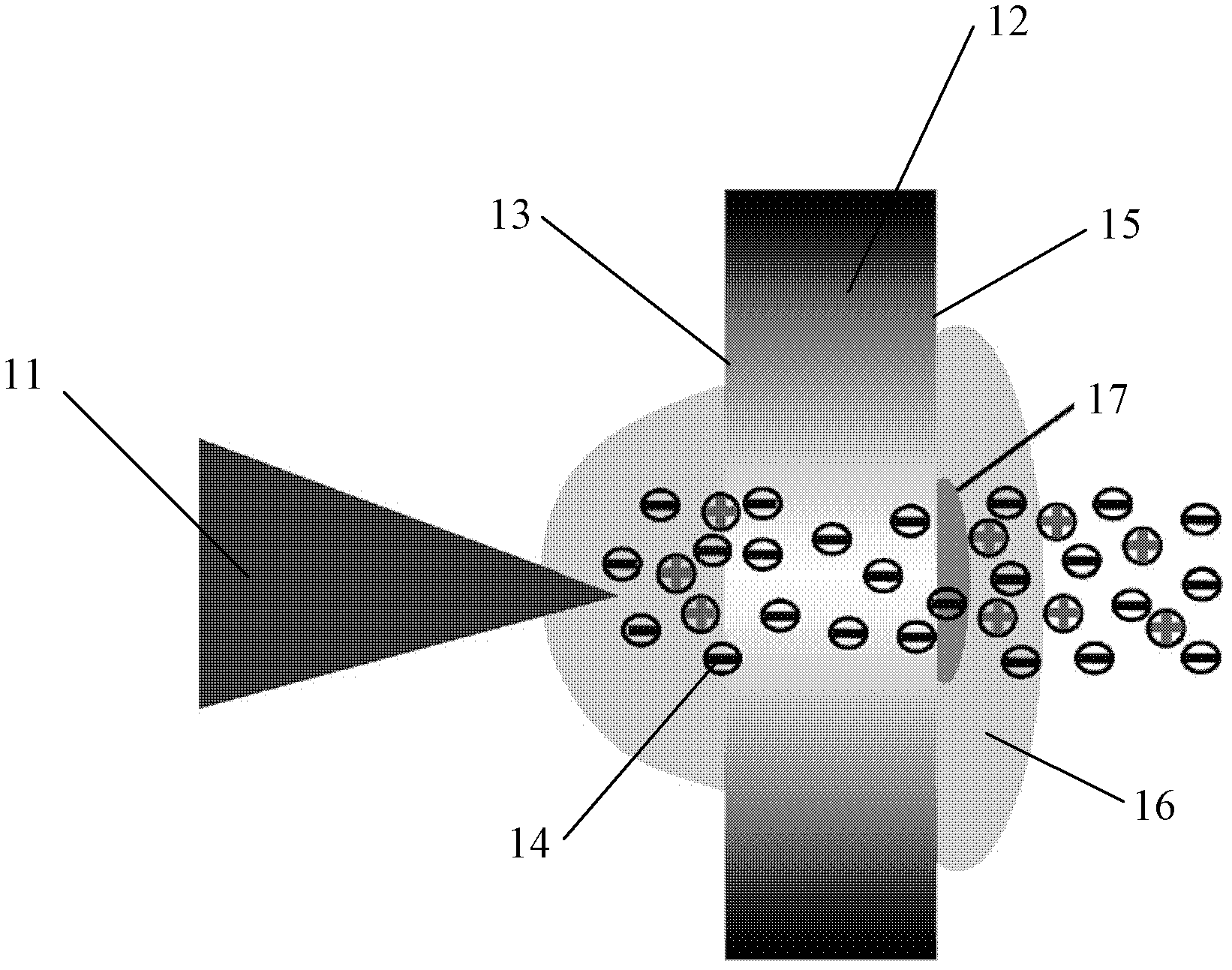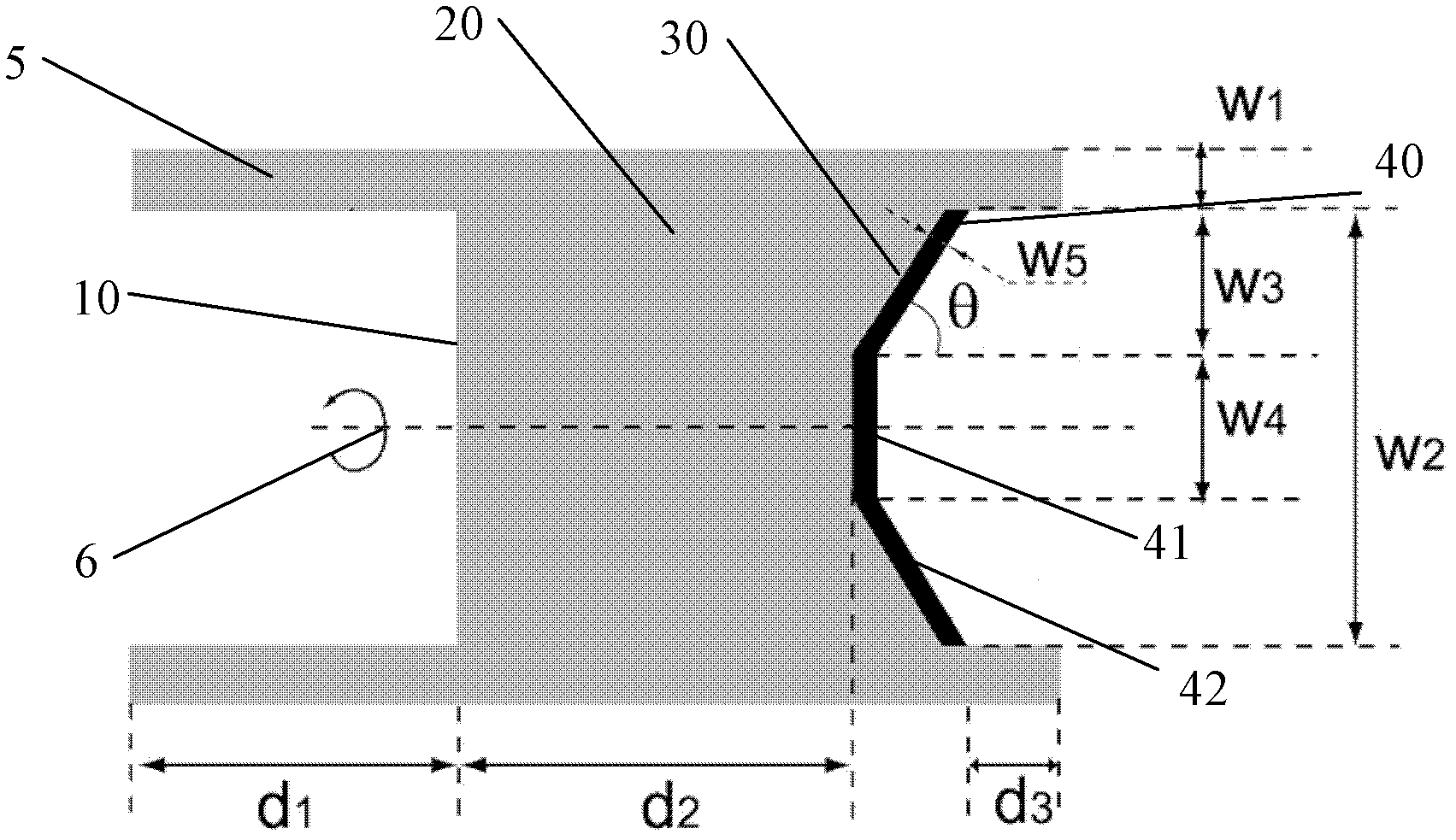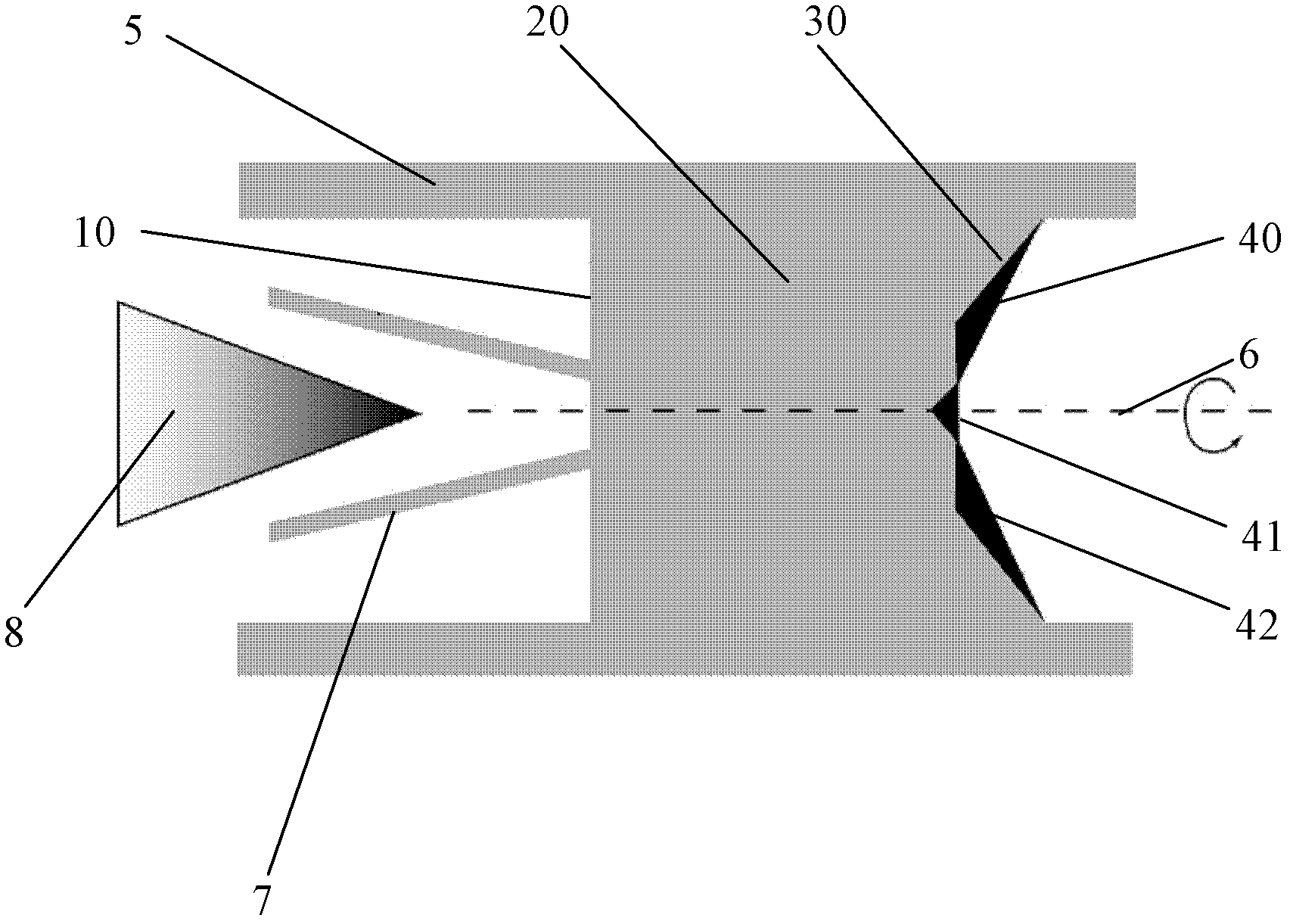Laser target used for producing ion acceleration
A laser target and ion source technology, applied in the field of laser targets, can solve the problems of technical difficulty, poor ion beam directionality, low efficiency, etc., and achieve the effects of cost reduction, low energy dissipation, and large charge
- Summary
- Abstract
- Description
- Claims
- Application Information
AI Technical Summary
Problems solved by technology
Method used
Image
Examples
Embodiment
[0056] This embodiment includes: a laser 8 and the laser target of the above-mentioned second embodiment (see image 3 ), the laser target includes a target front surface 10, a target body 20, a target rear surface 30, an ion source region 40, a metal cylinder 5 and a metal cone 7. The material of the laser target can be aluminum or copper (assuming that in the case of partial ionization, the charge-to-mass ratio is used in the simulation as 1 / (1836×2.4)). The ion source region 40 can be made of hydrocarbon material. The metal cone 7 of the target front surface 10 , the target rear surface 30 , and the ion source region 40 are all arranged symmetrically with respect to the central axis 6 of the laser target.
[0057] The thickness of the metal cone 7 in front of the target is 0.3 μm, the length is generally greater than 20 μm, the large diameter is 5.1 μm, and the small diameter is 3 μm. The inclination angle cannot exceed 10°, and in this embodiment, it is 3°. The cylinder ...
PUM
 Login to View More
Login to View More Abstract
Description
Claims
Application Information
 Login to View More
Login to View More - R&D
- Intellectual Property
- Life Sciences
- Materials
- Tech Scout
- Unparalleled Data Quality
- Higher Quality Content
- 60% Fewer Hallucinations
Browse by: Latest US Patents, China's latest patents, Technical Efficacy Thesaurus, Application Domain, Technology Topic, Popular Technical Reports.
© 2025 PatSnap. All rights reserved.Legal|Privacy policy|Modern Slavery Act Transparency Statement|Sitemap|About US| Contact US: help@patsnap.com



